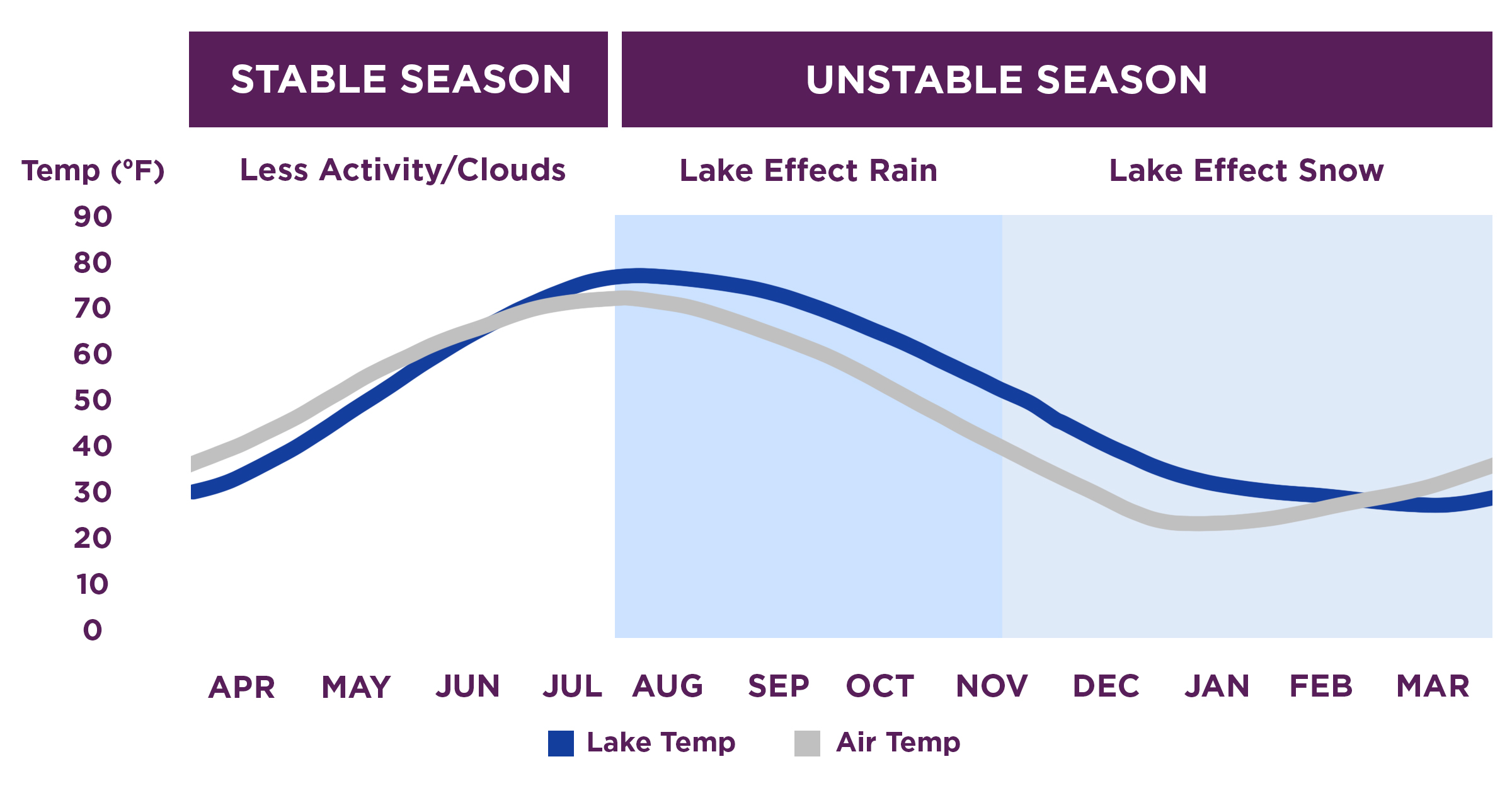The itinerary included the vineyards of Hermann J. Wiemer, Ravines, and Apollo’s Praise, plus a stop at Finger Lakes Distilling.
Most regions with a continental climate enjoy four seasons: spring, summer, fall, and winter. Much of Upstate New York, however, experiences just two: the stable season, which lasts from mid-March to mid-July, and the unstable season, which is the norm, lasting for the remaining eight months of the year.
“We experienced four seasons in about 20 minutes,” recalled Skurnik Portfolio Manager Marc Mousky. “First it was sunny, then clouds rolled in with a cool breeze, bringing rain, and suddenly sleet. Then it was sunny again.”
What makes the unstable season so challenging for agriculture is a phenomenon known as the Lake Effect. Cold air coming from Canada picks up moisture as it moves across the relatively warm Great Lakes and releases a deluge of chaos once the air is warmer than the land below. The Finger Lakes region happens to sit in the crosshairs of this weather pattern, with Lake Ontario to the northwest and Lake Erie to the west.
Despite the instability of the region, there is a narrow band around each of the Finger Lakes with a microclimate optimized for cool-climate winemaking. The temperature change caused by the Finger Lakes acts like a forcefield, protecting against the extremes of the Lake Effect. Here, in this unlikely corridor of opportunity, are three vineyards standing tall above the rest and exceeding the world’s expectations with grace.
Hermann J. Wiemer
Our team first arrived at the vineyards of Hermann J. Wiemer, a proud anomaly leading the way for the region.
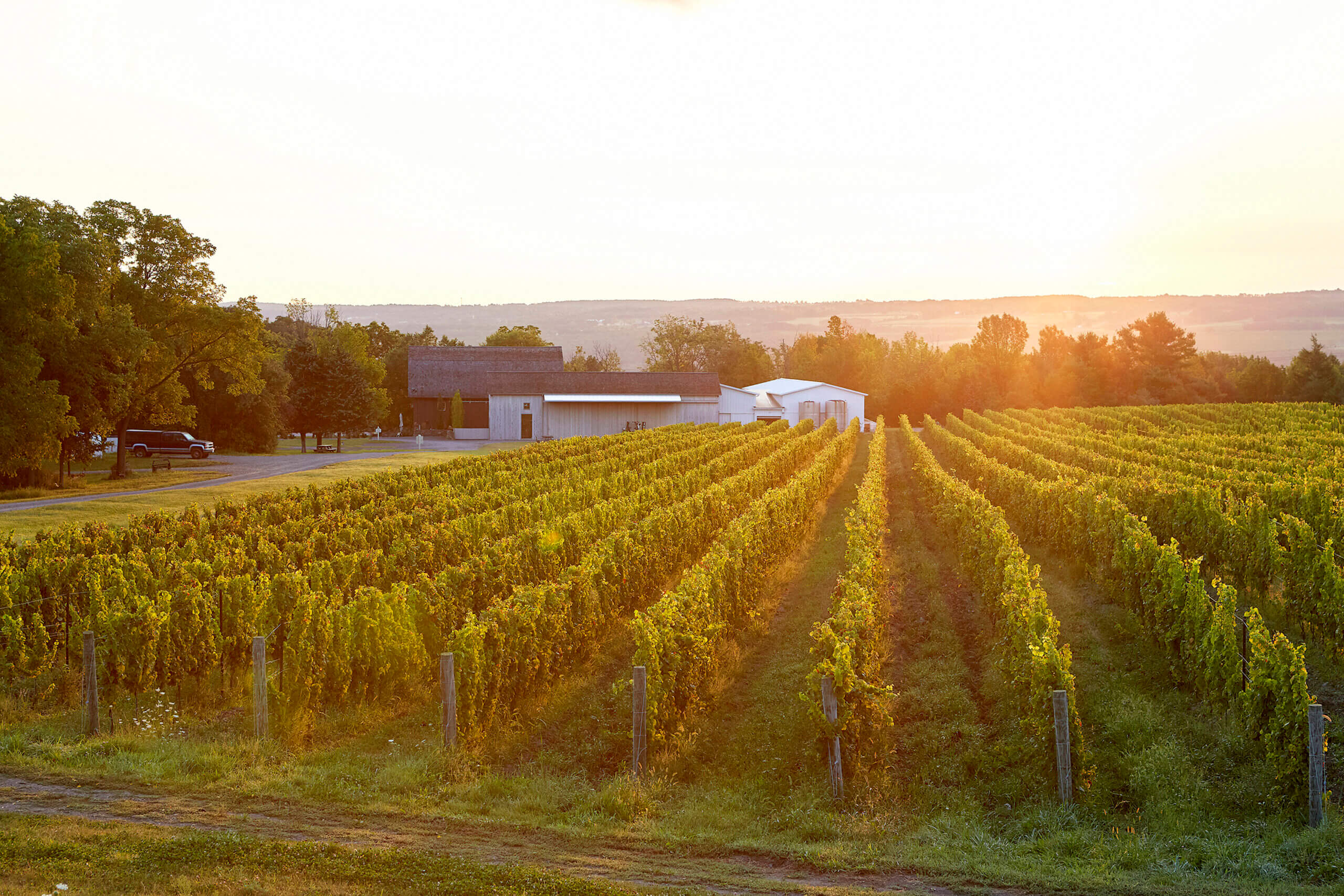
Hermann Wiemer was a winemaker from Bernkastel, Germany, who came to New York in the 1960s with over 300 years of family winemaking history in his pocket. He was an early advocate for planting Riesling and other vinifera varieties, and in 1974, he established a vine nursery after purchasing a plot for a vineyard on Seneca Lake. The nursery specialized in custom grafting, eventually supplying grapevines all over the country.
The nursery remains a major part of the winery’s operations today, where the original German grafting machines are still in use. Experts use analog foot pedals to cut jigsaw shapes into the vines and bind them together. The cut vines are then dipped in wax to keep out pests and disease and are kept in temperature-controlled incubators at 35º F. Grafts are made at a rate of about 600 to 800 per hour.

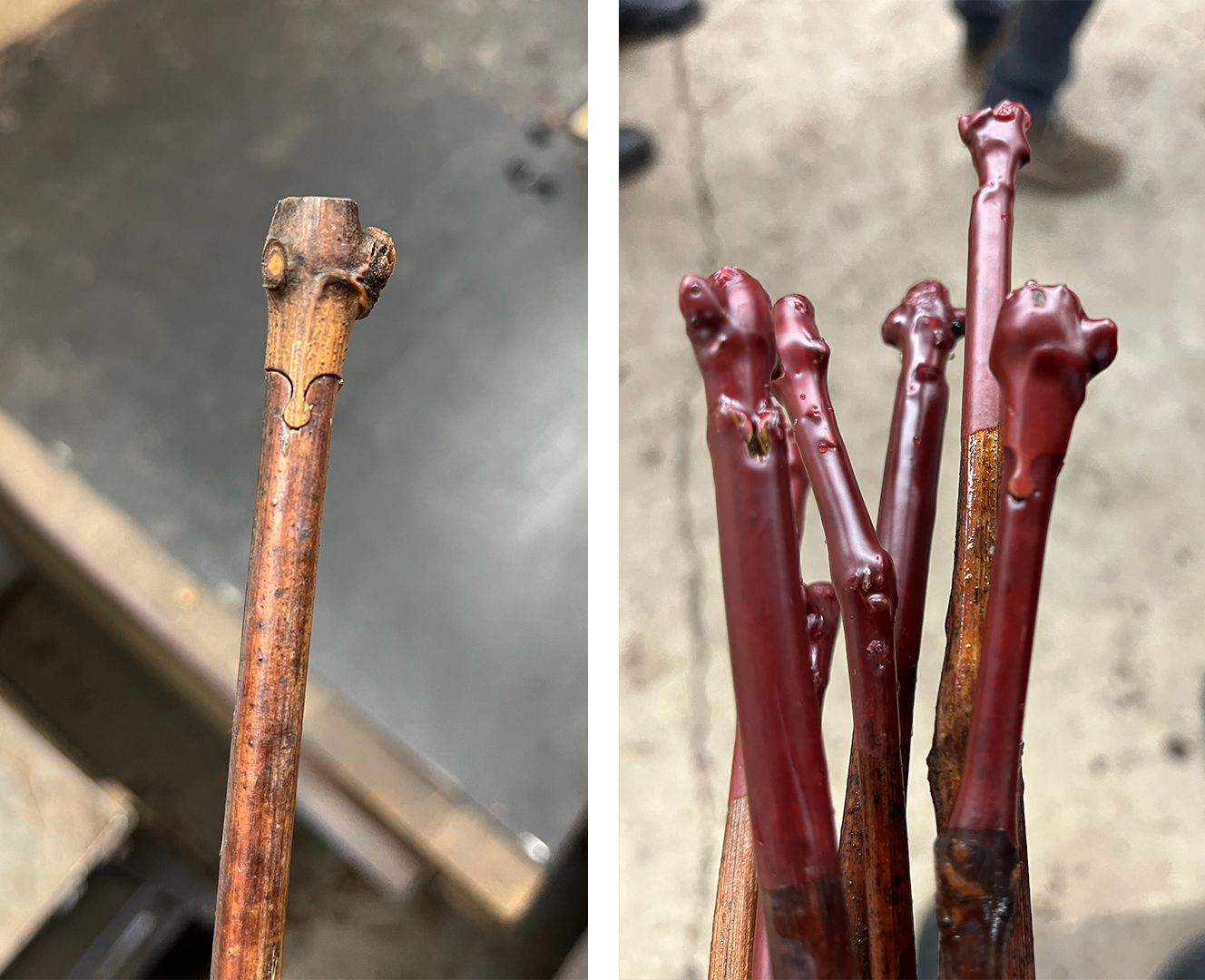

In 2001, Fred Merwarth became Hermann’s apprentice, and in 2007, upon Hermann’s retirement, he took over the vineyard with his wife Maressa and their friend Oskar Bynke, an agronomist from Sweden. The new leadership made a commitment to honoring Hermann’s vision, and they continued his legacy by ensuring every decision would be made in the interest of the long-term health of the land.
They were the first winery in the Finger Lakes to eliminate herbicides in 2003, and in 2015, they embarked on a biodynamic experiment, later becoming the first Demeter-certified winery east of the Rocky Mountains in 2023.
Low intervention means healthier vines and native yeast populations at the cost of existential vulnerabilities due to the unstable weather. Because of this, Wiemer’s yields are far lower than those of its contemporaries; however, Fred and Oskar make this a point of pride—a bold commitment to quality over quantity.
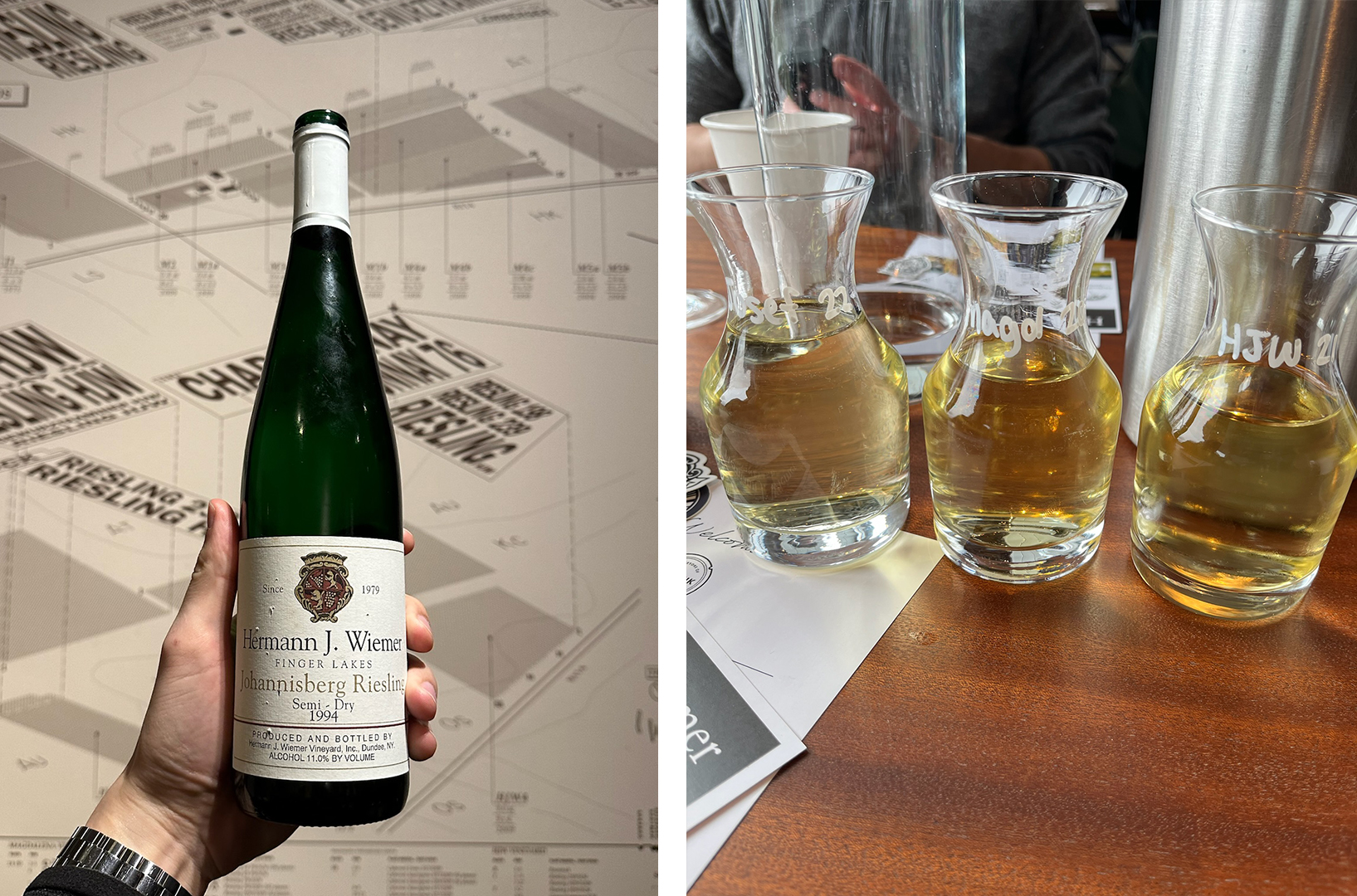
Ravines
Day 2 began at the Ravines tasting room at the top of Seneca Lake.
Established by Danish immigrant Morten Hallgren and his wife Lisa in 2001, they became the first winery in the Finger Lakes to exclusively pursue dry vinifera wines. Today, their investment has paid off with age-worthy wines that rival those of the Old World. Our team tasted through the library, which included a standout 2007 Pinot Noir, a 2013 Riesling, and a 2017 Sparking Brut.

Ravines is well on its way to becoming known for its sparkling wine made in the méthode champenoise. Their first vintage was 2006, and after a bit of trial and error, it soon established itself as an essential part of the Ravines identity.

The star of the show was a tie between Ravines’ state-of-the-art rotating gyropalettes and Skurnik Portfolio Manager Marc Mousky’s new best friend, Cotton, the miniature donkey.
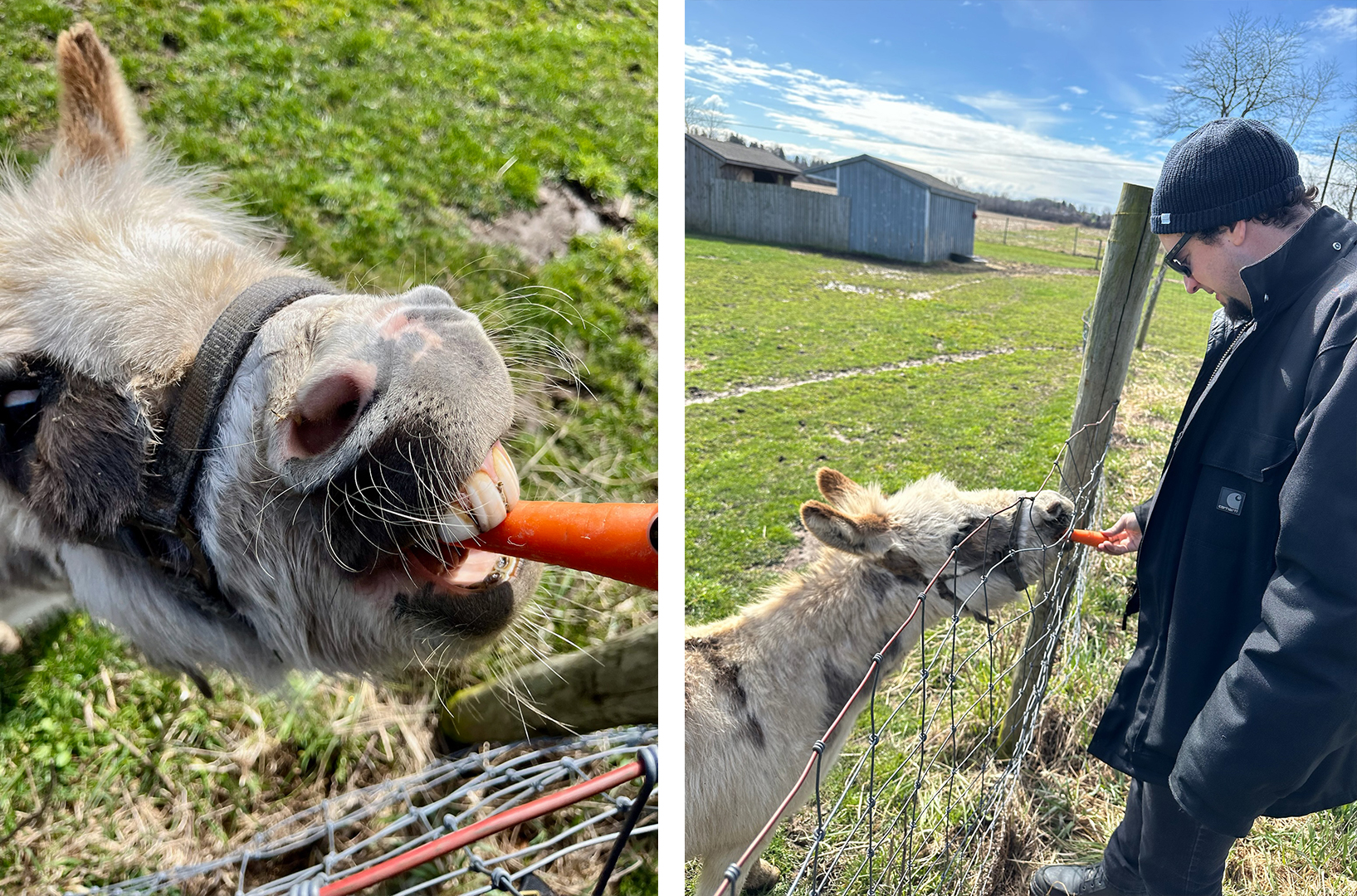
Ravines is a certified sustainable winery (and home to four miniature donkeys!) that enjoys a circular ecosystem featuring fertilizer from livestock manure and upcycled waste from the vineyards. They use no herbicides or insecticides and practice leaf removal and cluster thinning to lower the threat of disease brought by humid summers and heavy Lake Effect rains. The vineyards all lie on limestone and shalestone slopes with excellent drainage, and cover crops are planted to prevent erosion.

Apollo’s Praise
The team then traveled to Seneca Lake’s southwest shore to the vineyards of Apollo’s Praise, a brand-new endeavor from Finger Lakes winemaking legends Kelby James Russell and his wife Julia Rose Hoyle.
Upon arriving, the team was led on a scavenger hunt for shiners around the property. Each discovery led to in-situ tastings of different experimental wines that demonstrated the best expressions of each parcel.

After stomping around in the mud for a while, everyone went inside to taste the first vintage of Apollo’s Praise Riesling and get a sneak preview of its label.

Apollo’s Praise is the most anticipated release from the Finger Lakes, slated to drop in May 2024. Their fledgling production focuses on Riesling and Cabernet Franc with Chardonnay on the way and the first ever plantings of Scheurebe in New York. Read our exclusive interview with Kelby and Julia here.
Now is an exciting time for wine in the Finger Lakes; Ravines launched 20 years after Hermann J. Weimer, and Apollo’s Praise is launching 20 years after Ravines. Here we have three generations of Finger Lakes wine paving the way for the future, each with a steady hand on tradition and an optimistic eye on innovation. Whatever happens next, it’s going to be great.
Finger Lakes Distilling
The trip concluded at Finger Lakes Distilling, home to the well-known line of McKenzie whiskeys, which get their name from master distiller Brian McKenzie’s family.

The distillery is strongly influenced by his family’s Scottish and American ancestors. The architecture and design of the building reflect the classic style of Scottish whisky distilleries, and 95% of their ingredients are locally sourced from the Finger Lakes—everything from grains to berries to maple syrup.
Here, our team toured the fermenting room and the barrel room before tasting through some of their finished blends.
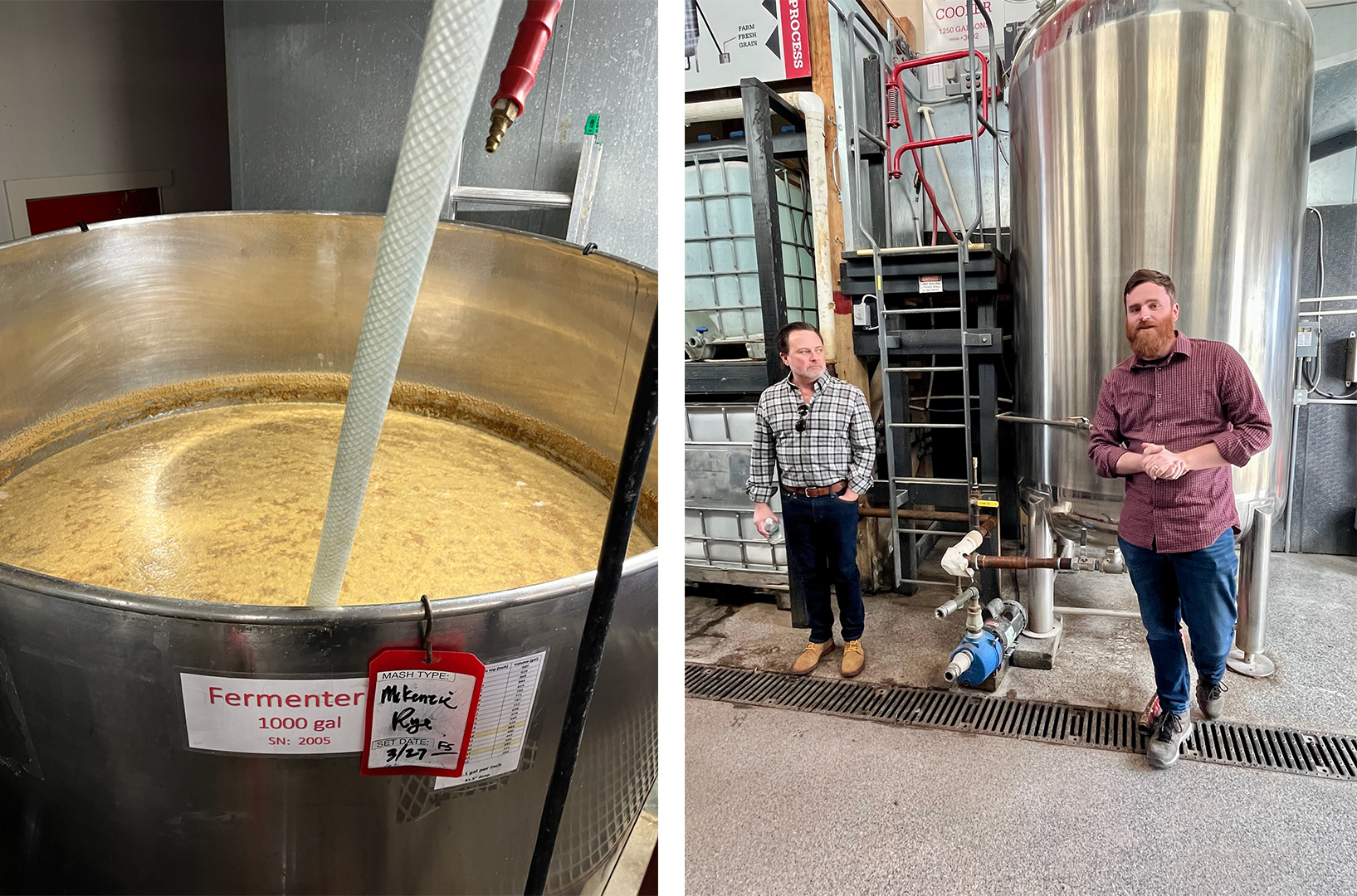
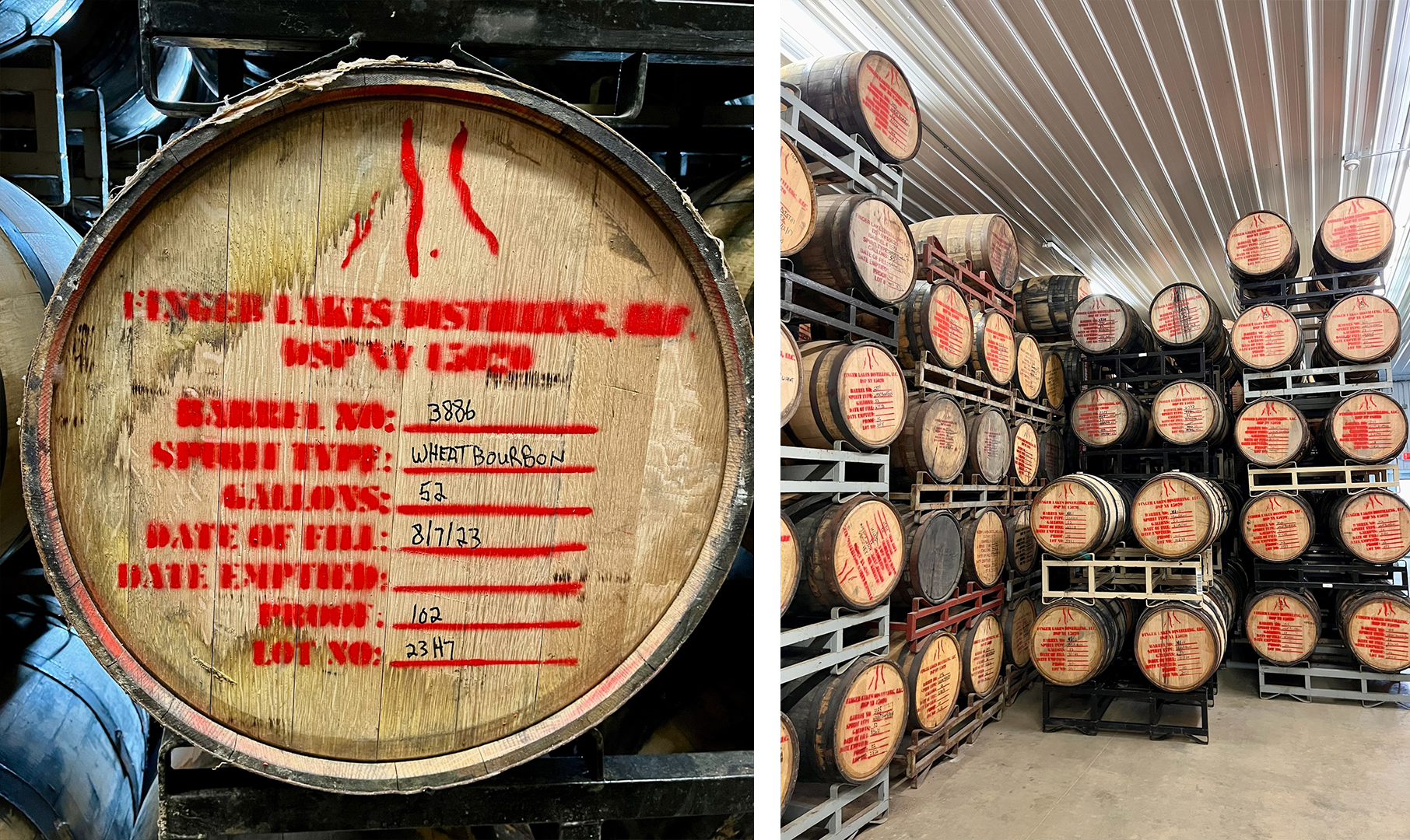
Thank you to our producers for being such gracious hosts and indulging our curiosities in the remarkable work you do. Cheers!
Take me to





